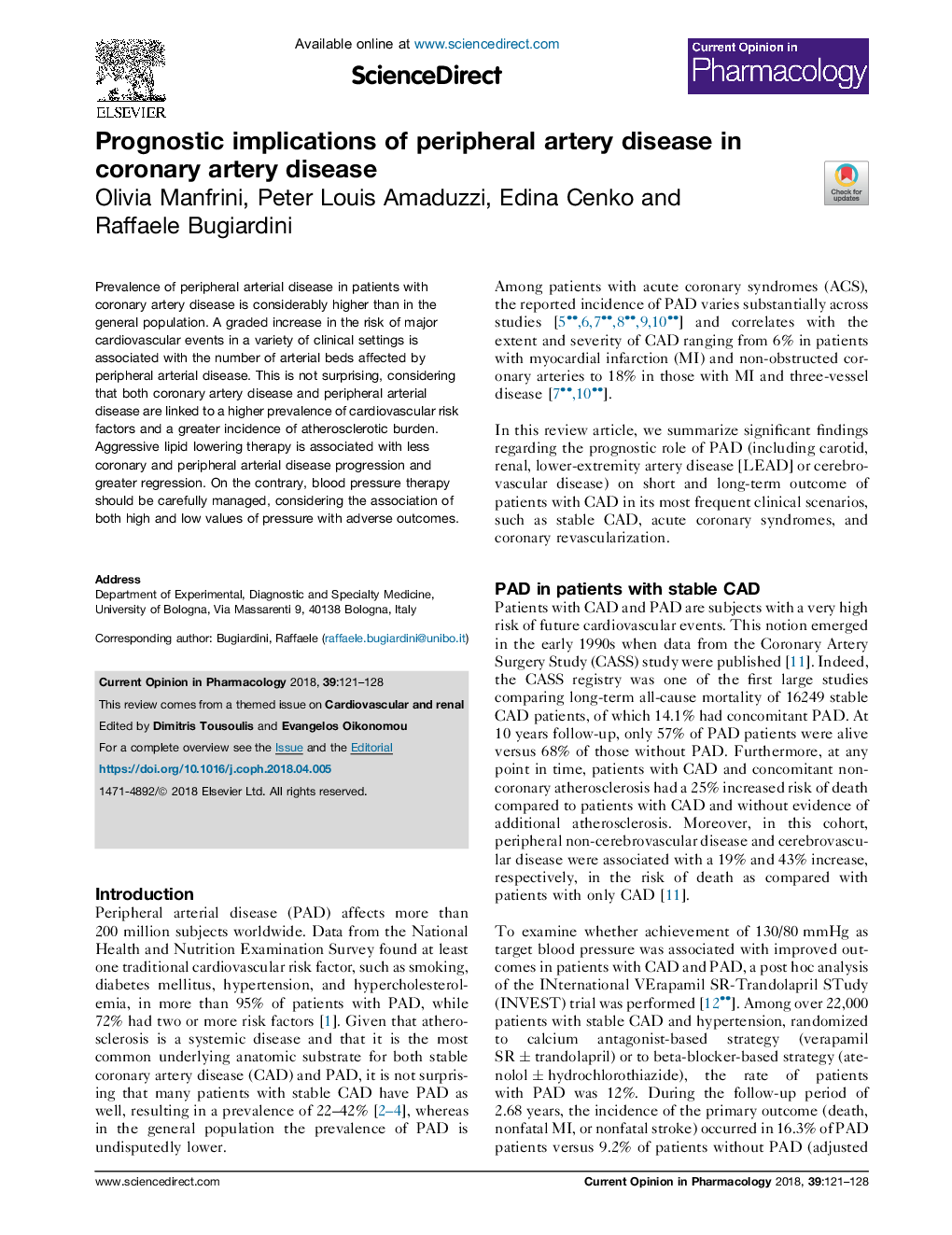| Article ID | Journal | Published Year | Pages | File Type |
|---|---|---|---|---|
| 8528701 | Current Opinion in Pharmacology | 2018 | 8 Pages |
Abstract
Prevalence of peripheral arterial disease in patients with coronary artery disease is considerably higher than in the general population. A graded increase in the risk of major cardiovascular events in a variety of clinical settings is associated with the number of arterial beds affected by peripheral arterial disease. This is not surprising, considering that both coronary artery disease and peripheral arterial disease are linked to a higher prevalence of cardiovascular risk factors and a greater incidence of atherosclerotic burden. Aggressive lipid lowering therapy is associated with less coronary and peripheral arterial disease progression and greater regression. On the contrary, blood pressure therapy should be carefully managed, considering the association of both high and low values of pressure with adverse outcomes.
Related Topics
Life Sciences
Neuroscience
Cellular and Molecular Neuroscience
Authors
Olivia Manfrini, Peter Louis Amaduzzi, Edina Cenko, Raffaele Bugiardini,
